A. V. Pastukhov - military topographer and climber
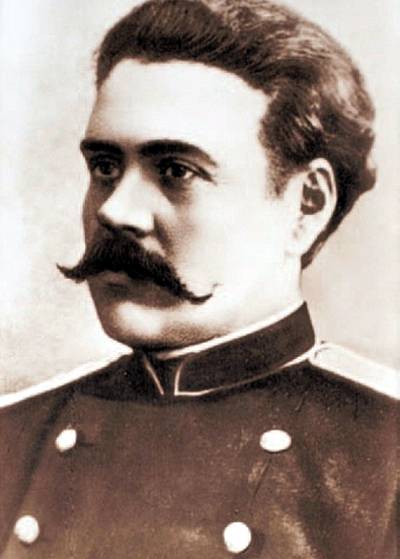
In Pyatigorsk, in front of the top of Mount Mashuk, on the southern side of it, a modest obelisk monument was erected to the remarkable Russian topographer and climber, a prominent explorer of the Caucasus and the pioneer of Russian mountaineering, Andrei Vasilyevich Pastukhov, for whom this mountain became "his last refuge."
It is from here, from the height of Mount Mashuk, that the whole picture of the charm of the Caucasus Mountains described by M. Yu. Lermontov opens up. Having seen the Caucasus in all its splendor, you will not forget it soon. And then all the time you can involuntarily strive there, into the distance, into the world of blue sparkling ice and silvery waterfalls, bizarre rocks and transcendental heights. And this feeling was experienced more than once by the one whose ashes rest under this stone obelisk, and therefore he wished to find eternal peace here, at the height, in view of the sparkling chain of snowy mountains. One of the few Russians, he had every right to do so!
When you begin to look at the physical map of the Caucasus, where all the peaks, ridges, glaciers, rivers and lakes are indicated with an accuracy of a meter, it is hard to believe that the study of this unique and complex region of the earth began relatively recently ...
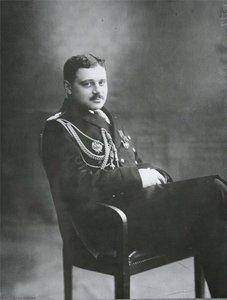
Some attempts were made back in the XNUMXth century, but until the XNUMXth century, Europeans knew about the Caucasus from the ancient myth of Prometheus and from the Bible. There was also information from medieval sources about the Great Silk Road, winding through bizarre gorges and passes. It was only during the colonization of the "country of the mountains" by the Russian Empire that planned explorations of this region began.
Youth
Fate, as it seemed at first, did not prepare this future mountain climber for such a lofty destination. He was born in the wilderness of the steppe, on July 11, 1860, in the family of a modest groom of a stud farm, at the Derkul state stud farm in Kharkov province.
But in spite of fate, the boy managed to rise above the environment and go towards his dream - the difficult but romantic profession of a topographer. On the way to it, many obstacles awaited him: persistent study, service as a private. The exams, at the time, were particularly stringent for the lower class. Study and study again. And labor, labor and labor.
Andrei Vasilyevich graduated only from the Derkul horse breeding school. In 1878 he entered the corps of military topographers as a private. After a year of service, Pastukhov was already a non-commissioned officer, and after three years he received the first class rank. The school gave him little knowledge. But nevertheless, he quickly got a class rank by passing a special exam. This fact speaks of the great abilities of the young Pastukhov, of his extraordinary capacity for work.
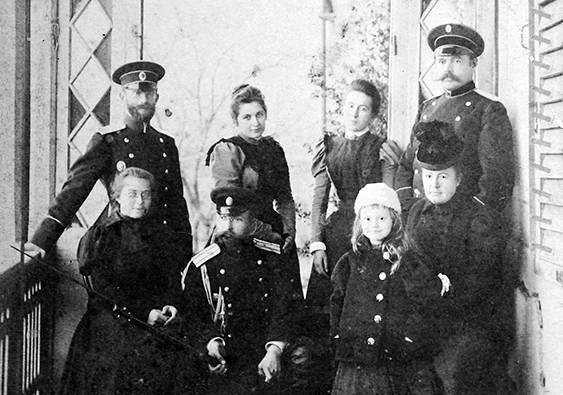
Andrei Vasilievich continuously improved his knowledge, studied the sciences of his day, especially those that he encountered during his work in the mountains. He became an educated, trained explorer. To better perform topographic work, Pastukhov studied photography and became an outstanding photographer. The photographs left by him speak of his skill and represent a great historical value.
If Andrei Vasilyevich studied any industry, then he studied it thoroughly. Therefore, it is not surprising that such a cautious scientist as Voeikova, who used these materials in his works, fully trusted his notes on meteorology.
Climbing
All his life he worked in the Caucasus mountains, gave his life to the Caucasus and, conducting topographic work in the area of eternal snows, Pastukhov carefully looked at what was around him, followed the snow cover and changes in glaciers. He found in the snow at high altitude the corpses of birds that died during the flight over the Caucasian ridge, which was then denied by ornithologists who studied the paths of birds' migration.
To carry out complex topographic works, Andrei Vasilyevich had to climb high panoramic points, including Datakh-court, Shah-Dag, Halats, Alagez, Bolshoi and Maly Ararat, Eastern and Western peaks of Elbrus. Here they installed triangulation points in the form of high poles with flags.
And before Pastukhov, ascents to the peaks of the Caucasus Mountains were made, but these were foreign climbers, well equipped and had experienced guides. Andrei Vasilievich used primitive equipment (a stick with a bayonet, a burka, a short fur coat, boots, felt boots, etc.) and was himself simultaneously a guide, climber, topographer and porter.
Later, he created from a detachment of Cossacks, seconded to his topographic detachment, who accompanied him in his work in the Caucasus, dedicated workers and good climbers, who steadfastly endured with him all the hardships of mountain hikes and ascents. The names of these Cossacks: Dorofey Mernov, Dmitry Nekhoroshy, Yakov Taranov, Lapkin, Potapov and others.
Extraordinary persistence and perseverance in achieving this goal is a characteristic feature in the work of Pastukhov. No difficulty stopped him. One has only to read the description of his ascents, for example, to the top of Elbrus, to be convinced of this.
I called out to the Cossacks and told them to get ready. Here the snowdrifts were swaying, and from them the Cossacks began to appear, as from the graves. The places they left in an instant were covered with snow, and it was impossible to lie on them again except forever, because each of us, as soon as he got up, was instantly covered with snow, and the clothes left for a minute on the ground were covered with a whole snowdrift. from which you had to pull her out ...
It was impossible to wait for something and hesitate ... And set off.
We walked again in the same order: I was in front, and behind me were the Cossacks at a distance of two fathoms from each other.
This is one of the descriptions of the ascent to the top of Elbrus, made by Pastukhov. This is a familiar picture for me, since I also began my mountaineering work in such conditions, when there was no equipment, no shelters, no guides. Reading what has been written is one thing, but experiencing, experiencing, transferring is completely different.
Unfavorable conditions and dangers did not stop Pastukhov's work. He is a topographer and, above all, does his topographic work, and he does it very carefully. So, his work on photographing the plan of the Elbrus peaks, made by him under unfavorable meteorological conditions, was done well, accurately. And this plan has not yet been corrected, not corrected. He made plans for the peaks of Big Ararat and Kazbek. A. V. Pastukhov passed and examined many valleys, gorges and glaciers of the Caucasus.
Pastukhov was the first to go to the top of Kazbek from the north, along an unknown path. He became the first Russian climber to visit both peaks of Elbrus, and the first person in the world to climb the top of Ararat three times. Andrei Vasilyevich made his travels to the sky-high heights just when the attitude towards mountains and mountain travel began to change dramatically in Russian society, which until then had attracted mainly foreign athletes. And therefore, the news of his compatriot's victories brought him great popularity among Russian mountaineering fans.
Pastukhov spent almost his entire short, four-decade life in travel. Wandering fate did not allow him to put down roots, grow to some one place ...
"All Mashuk serves him as a pedestal"
And only Pyatigorsk left a noticeable mark on his life. A small resort town more than once gave a fidget topographer a calm and pleasant rest. Here he was pleased with the amazing nature of Pyatigorye. Here he was surrounded by friends and expected to meet with like-minded people. Here, seriously ill, he spent the last months of his life, admiring the already inaccessible snow peaks ...
And two days later, according to his last wish, he was buried by friends on the top of Mount Mashuk, from where his beloved mountains of the Caucasus are clearly visible, to which he devoted the best years of his life.
- was written in his obituary.
A large wooden cross was originally installed on the grave of A.V. Pastukhov, but Pastukhov's relatives, friends, acquaintances and colleagues in the corps of military topographers decided to erect a durable monument there at their own expense. And in the spring of 1903, an obelisk with a bas-relief portrait of a climber and inscriptions, worth 1200 rubles, was made in the Tiflis workshop of the then famous sculptor A. Andreoletti and his sons.
On August 3, 1903, the ceremonial opening of the tombstone took place in the presence of numerous guests. A low obelisk, as if growing from a rough block of marble, in a round niche of which there was a bas-relief portrait of Pastukhov, was placed on a low stepped pedestal made of slabs of local limestone. As the press wrote, "the whole Mashuk serves as a pedestal" for the monument to the famous climber. The front side of the obelisk, with a cross and a bas-relief, was facing east according to the Orthodox tradition.
On behalf of the governor of the Caucasus, the head of the Military Historical Department, Major General V.A.Potto, in the summer of 1905, registered all the historical monuments of the city of Pyatigorsk, which included the Pastukhov obelisk, and the Caucasian authorities allocated special funds to maintain these monuments.
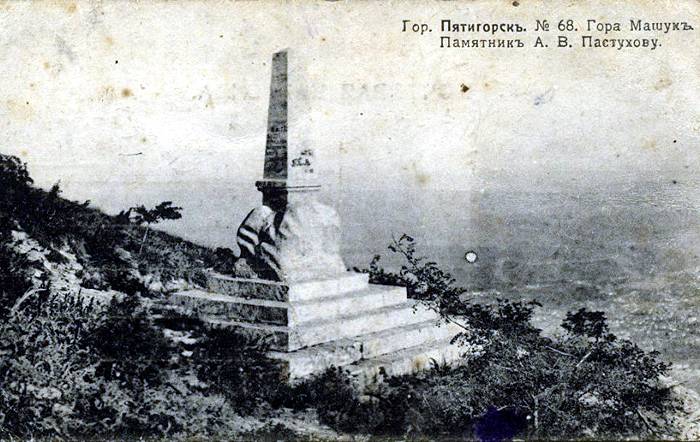
The ancient monument to the mountaineer-topographer has been preserved.
Now the obelisk is turned with its face to the south, to the chain of snowy Caucasus mountains, and is surrounded by a low cast-iron fence. The lost original bas-relief of Pastukhov was replaced by a bas-relief made by the local sculptor M. G. Minkin.
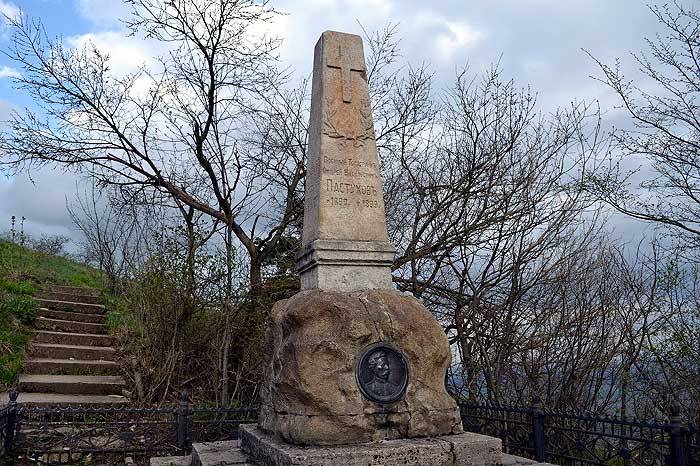
A.V. Pastukhov did not leave almost none of the highest peaks of the Caucasus unvisited, he climbed some of them several times, and the ascent became, as it were, the goal of his life. Thus, among the Russian Caucasian climbers, Andrei
Vasilievich was a really large figure. He outlined the paths followed by further explorers of the Caucasus in general and its ridge in particular. Now the slopes of some peaks of Kazbek, Elbrus are, as they say, inhabited. But we must not forget that the first paths on them were laid by A.V. Pastukhov.
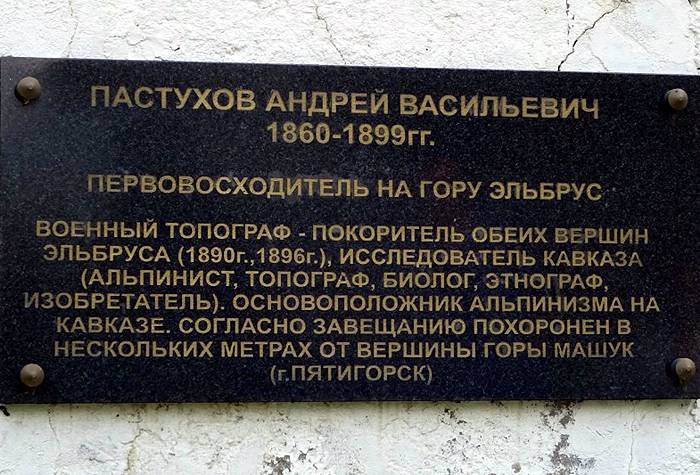
Nowadays, those who brought the baton of Russian mountaineering and love of travel, which he took over from him, pay tribute to his memory. Flowers from geodesists and geologists, climbers and local historians - the spiritual heirs of a brave and inquisitive man who opened the way for Russians to the sparkling heights of the Caucasus Mountains - lie at the foot of the obelisk.
The name of Pastukhov is borne by the rocks on the ice slope of Elbrus - at an altitude of 4610 meters (“Pastukhov's Shelter.” It was here that the Cossacks accompanying Pastukhov carried the topographer exhausted from mountain sickness on cloaks).
In the Kazbek-Dzhimarai mountain range of North Ossetia there is a Pastukhov peak (4312 meters). In the Western Caucasus, on the Uzhum ridge, there is Pastukhov Mountain, 2733 meters high. A mountain in Antarctica is named after him. The name of Andrey Pastukhov was given to the secondary school of the village of Novoderkul, Belovodsky district, Luhansk region. A monument to a member of the Russian Geographical Society was erected in the Baksan Gorge of Kabardino-Balkaria. On the house in the village of Danilovka, built on the site of the Pastukhovs' house, there is a memorial plaque in memory of him. A street in the city of Pyatigorsk is named after him.
To the great credit of the officers of the modern Cartographic Service of the General Staff of the RF Armed Forces, they do not forget their great predecessor. And it is always nice to see a wreath with the inscription on the grave of A.V. Pastukhov:
Information